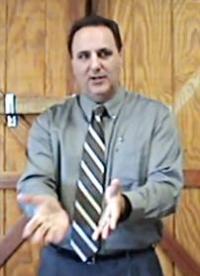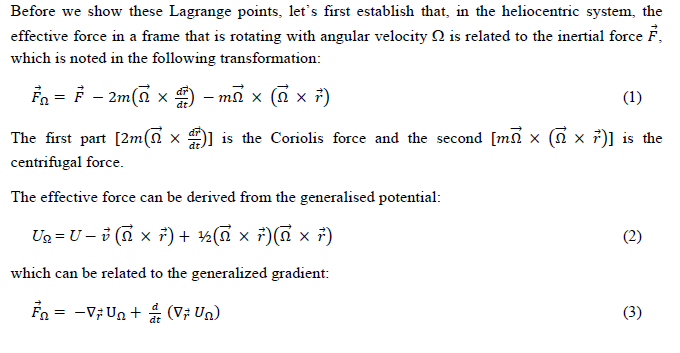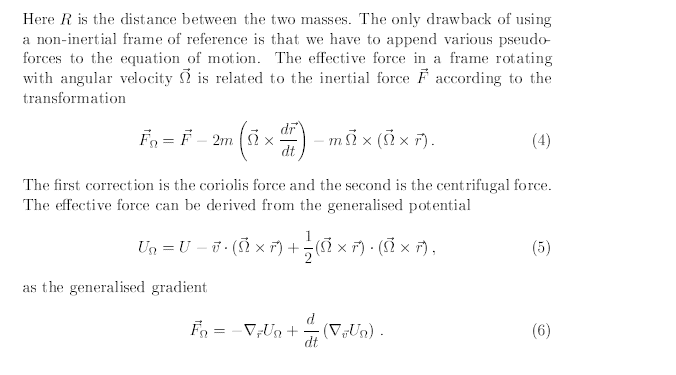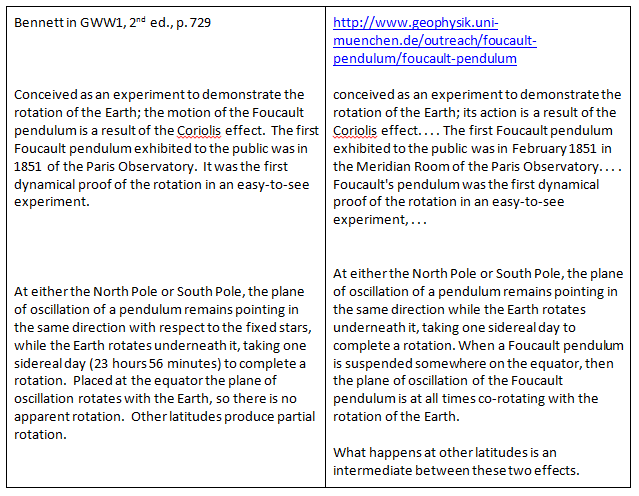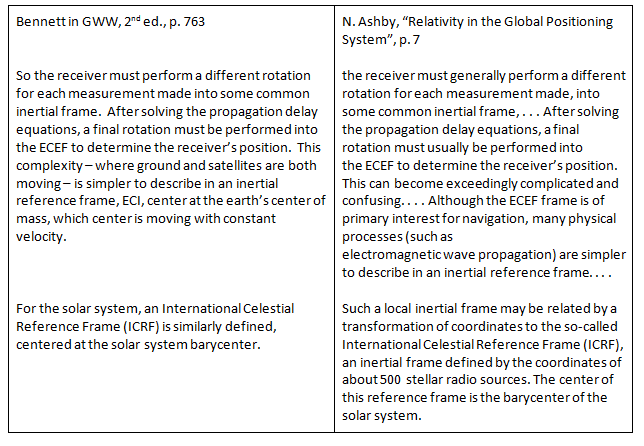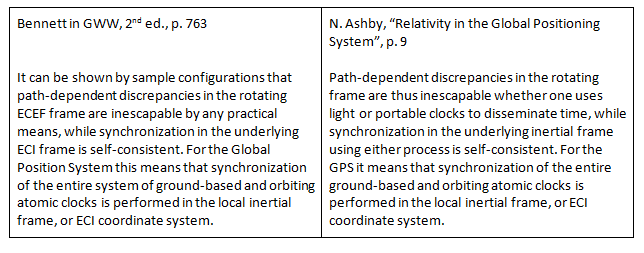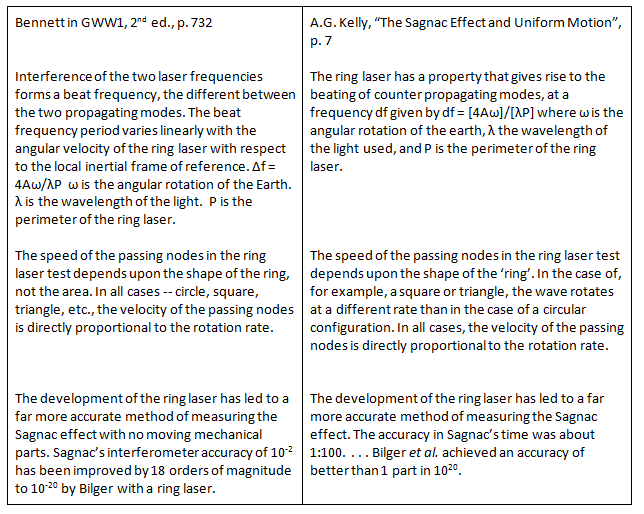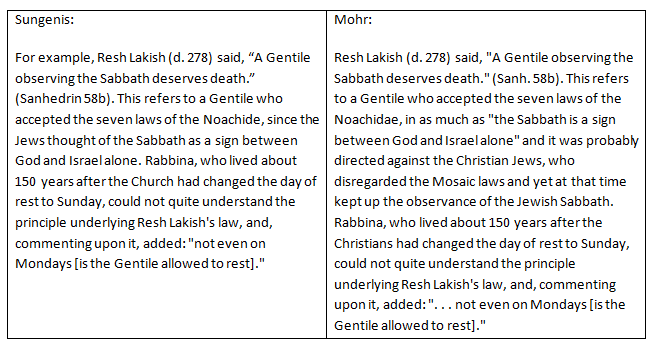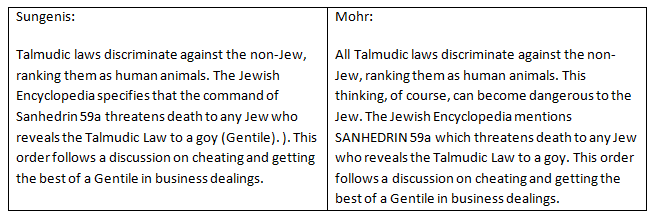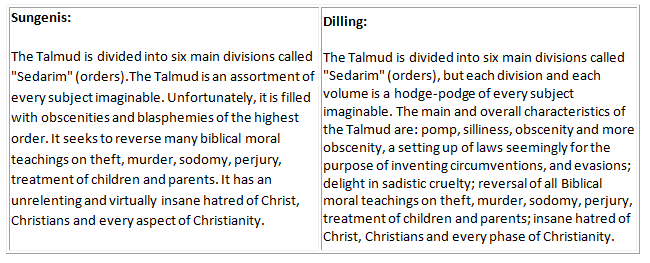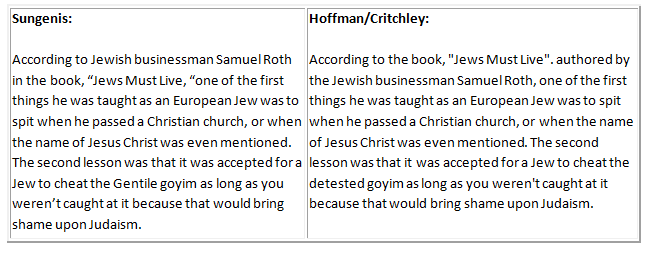by David Palm, 22 August 2014
Plagiarism is literary burglary. At its worst it involves an outright intent to deceive, to pass off another’s work as one’s own. More often, it is the result of carelessness or ignorance. But whether intentional or unintentional (the distinction is often hard to draw), plagiarism is always an error, and a serious one.
Whenever you borrow another writer’s words or ideas, you must acknowledge the borrowing. . . . When you use their words, their ideas, even their organization or sequence of ideas, say so–in a footnote or in the text. Claim as your own only what properly is your own (Westminster Theological Seminary, “Statement on Plagiarism“, citing Stone and Hill, Prose Style: A Handbook for Writers.)
What Is Plagiarism? . . . Intentionally representing the words, ideas, or sequence of ideas of another as one’s own in any academic exercise; failure to attribute any of the following: quotations, paraphrases, or borrowed information. (George Washington University, “Citing Responsibly“, p. 2)
The new geocentrists present themselves as both qualified and competent to overturn the entire world of physics and astrophysics concerning the motion of the earth. They also present themselves as uniquely trustworthy and honest in their dealings with the scientific data. The vast majority of working scientists, they claim, have misrepresented the physical evidence of the universe, often intentionally, and precisely just in order to deny geocentrism (a cosmology which these scientists allegedly know in their heart of hearts to be true). Robert Sungenis demonstrates this dark, conspiratorial view of the scientific community in the title of his talk at a 2010 geocentrism conference, “Geocentrism: They Know It But They’re Hiding It,” and even in his movie, The Principle, he accuses NASA of intentionally removing information from its websites that would support geocentrism. As the geocentrists spin it, they alone have the competence, courage, and honesty to present things as they really are.
 The problem is that the geocentrists have repeatedly demonstrated both incompetence and unethical behavior. For instance, at the top of this article are two definitions of plagiarism, from the two accredited institutions of higher learning from which Robert Sungenis claims degrees. Three prominent geocentrists—Robert Sungenis, Dr. Robert Bennett, and Dr. Gerardus Bouw—have engaged in this behavior. They have also altered actual quotes so as to make them support their views.
The problem is that the geocentrists have repeatedly demonstrated both incompetence and unethical behavior. For instance, at the top of this article are two definitions of plagiarism, from the two accredited institutions of higher learning from which Robert Sungenis claims degrees. Three prominent geocentrists—Robert Sungenis, Dr. Robert Bennett, and Dr. Gerardus Bouw—have engaged in this behavior. They have also altered actual quotes so as to make them support their views.
And why would they do that? This is the central question to ask yourself as you read on: If the geocentrists are as competent in the fields of physics and astrophysics as they claim—so competent and honest that you should trust them instead of virtually the entire scientific community—then why do they resort to stealing and/or altering other people’s work in order to make their case?
These are admittedly serious charges and they’re not made lightly; rest assured, they are well documented. But it’s important to make clear at the outset that the goal of presenting this material is not to “destroy” the individuals highlighted (as Sungenis has complained in the past). Rather, this material is presented because these individuals are making very weighty and sweeping claims not only in matters of science, but also in regard to what is and is not the “true teaching” of the Catholic Church. They have presented themselves as the lone, trustworthy sources of information in this area and are striving to gain as many followers and donors as they can. This is, obviously, serious business. Therefore, it is legitimate and important to examine their behavior, so that those who are deciding whether or not to follow them can more accurately answer these central questions: Are the geocentrists competent and are they trustworthy?
Robert Sungenis has a long and well-documented history of plagiarism, starting in 2002 with his essay, “Conversion of the Jews Not Necessary? The Apocalyptic Ramifications of a Novel Teaching”, in which he plagiarized from a number of sources, including Nazi Labor Minister Robert Ley and almost 1500 words from white supremacist Gordon “Jack” Mohr. In subsequent years, Sungenis engaged in numerous additional acts of plagiarism, including a 2009 recast of “Conversion of the Jews” in which he excised many of the most egregious sources, but then introduced additional examples of plagiarized material. He has also deployed numerous bogus quotes without documentation (a combination of calumny and plagiarism), including a blatantly perverted “quote” from Albert Einstein, making it appear that Einstein considered the charge of “Anti-Semitism” to be nothing more than a mere ploy designed to cow gentiles (see Appendix 1 for documentation.)
But perhaps the most eye-opening example of Sungenis’s plagiarism was when, as related by his former vice-president Ben Douglass, Sungenis presented a scholar’s entire article as his own work, going so far as to sell it on DVD. And when Douglass confronted him with this impropriety, Sungenis publicly accused him of being “brainwashed and pressured by . . . Jewish ideologues” and then proceeded to slander the very scholar from whom he had plagiarized with, of all things, a false charge of plagiarism (see Appendix 1).
In connection with geocentrism, Sungenis’s “source problems” started early. On page 49 of the first edition of Galileo Was Wrong (GWW), Sungenis quoted C. Truesdell as follows: “Physicist C. Truesdell says the same from a different angle: ‘The heliocentric theory would have been rejected if people of the 17th century had computers.’” A reader on an Internet forum took the time to look up the actual quote, and discovered that, “now that you give the page number I see that Sungenis is giving a crude paraphrase to help his distortions. In other words, not only is the context lost, but it’s a misquote as well” (link). The actual quote from Truesdell was as follows: “Had modern machines been available then, Kepler himself might have formulated his laws nevertheless, but astronomers would not have accepted them” (link). Obviously, quite a different meaning than the altered text Sungenis provided in GWW.
The documentation problems in GWW are legion (see here). But just to cite one particularly curious example, on page 95 of GWW (2nd ed) Sungenis has a “quote” from Karl Popper containing two sets of ellipses. His footnote says, “”Karl Popper, Conjectures and Refutations: The Growth of Scientific Knowledge, 1963, 1965, pp. 229, 192, 151.” In other words, Sungenis has created a “quotation” from Popper by starting with two sentences from page 229, followed by a sentence from 37 pages back, followed by another sentence 41 pages back from that. This blatantly cobbled-together “quote” remains in the 9th ed. of GWW.
Turning specifically to the matter of plagiarism, more recently, in his article, “Karl Keating’s ‘Scientific’ Attempt to Debunk Geocentrism”, Sungenis provided what he claimed to be an answer to a long-standing challenge issued to the geocentrists to demonstrate how Lagrange points can be derived in a geocentric system. Starting on page 21, Sungenis copied a page and a half of text from Neil J. Cornish’s article “The Lagrange Points”, including Cornish’s equations and one of Cornish’s diagrams, without any attribution. But Sungenis didn’t just copy and paste the material. He actually changed the text to cast it in a geocentric mold—although it is still clear that it was all taken from Cornish—while leaving the mathematical equations and the illustration untouched.
Dr. Alec MacAndrew brought this plagiarism to Sungenis’s attention in his own article, “There He Goes Again” (Dr. MacAndrew also highlights Sungenis’s mathematical errors, as well as his habit of copying the entirety of other peoples’ works into his own, a practice that at the very least is a violation of the fair use exception to copyright law: see here). But even though he responded to MacAndrew’s piece, as of the posting of this current piece (08/22/2014) Sungenis has not made any corrections.
Sungenis introduces this section with the heading “The Geocentric Lagrange Points”. He has a footnote on this header, but in that note he merely thanks, “Dr. Milenko Bernadic . . . for his help on the Lagrange calculations”; there is no reference to Cornish anywhere in the article. (Note: if Sungenis seeks to insulate himself from the charge of plagiarism by claiming it was not he, but Dr. Milenko Bernadic, who copied the material from Cornish, then this will only serve to document that yet another geocentrist has been plagiarizing material.)
Here’s an example of Sungenis co-opting Cornish’s math and tweaking his text:
Sungenis, “Karl Keating’s ‘Scientific’ Attempt to Debunk Geocentrism”, p. 21
And here is Cornish, “The Lagrange Points”, p. 2
The reader should compare pages 21-22 of “Karl Keating’s ‘Scientific’ Attempt to Debunk Geocentrism” to pages 2-3 of Cornish’s “The Lagrange Points” and it will be clear that Sungenis has lifted the text, equations, and even graphic from Cornish. What makes Sungenis’s habit of literary burglary particularly ironic is that plagiarism is one of the very charges that Sungenis makes against Einstein, in an attempt to discredit the latter’s integrity and trustworthiness, stating that, “instances of Einstein’s outright plagiarism abound” (Galileo Was Wrong, 2nd ed. p. 1063f.; cf. also p. 982; in the latest edition of GWW Sungenis extends the charge of plagiarism to Copernicus; cf. GWW1, 9th ed., p. 42). For many additional instances of Sungenis’s own plagiarism, see Appendix 1.
Dr. Robert Bennett contributed a chapter to Galileo Was Wrong, and in that chapter, he uses the work of others without giving them credit. As with Sungenis, these are not just examples of cutting and pasting while perhaps just being sloppy and forgetting to include a reference. Bennett has actually altered the wording somewhat in order to present the ideas and work as his own. As such, it’s extremely difficult to excuse these examples as mere, accidental oversights. While his own version isn’t identical to the original, it still retains the fundamental content of the original and therefore, ethically, it should have been cited verbatim with attribution.
There are a few other things to keep in mind. Some readers may understandably not be intimately familiar with the objective rules concerning what does and does not comprise plagiarism. But Sungenis, Bennett, and Bouw hold themselves out as consummate scholars and claim real (in the case of Bennett and Bouw) or imagined (in the case of Sungenis) doctorates. Therefore, they have no excuse for failing to follow such basic, well-known standards on the use of secondary sources and proper documentation. In fact, even a run-of-the-mill, on-line plagiarism scanner commonly used for high school and college students easily discovered the plagiarism in Galileo Was Wrong and the geocentrists’ latest articles on the “Lagrange point challenge”.
Remember, too, that Bennett served as the advisor and evaluator of Sungenis’s ostensive “Ph.D. dissertation”, which basically became the first edition of GWW. Bennett’s plagiarized material in the earliest edition of GWW, at the very least, calls his own scholarly judgment and ethical standards into question, and therefore, his qualifications to be supervising a doctoral “dissertation”. [Note, too, that Jacob Michael found numerous documentation anomalies in just the first 200 pages of the earliest edition of GWW: as Michael asks, “What does it say about Calamus that they gave Sungenis a grade of ‘excellent’ on his dissertational research, when examining only the first four chapters of GWW reveals serious short-comings in terms of proper source attribution?” (see “Just What the Doctor Ordered”)]
I should make clear that the examples below are the most extensive I could find in the limited time I had to research this; but they are far from exhaustive:
This unattributed text remains in the latest edition, GWW2, 9th ed., p. 152.
Ashby’s “Relativity in the Global Positioning System” is referenced elsewhere in GWW, but not on page 763. This unattributed text remains in the latest edition, GWW2, 9th ed., p. 183.
Again, there is no reference to Ashby’s work on page 763. This unattributed text remains in the latest edition, GWW2, 9th ed., p. 183.
There is no reference anywhere in GWW to Kelly’s “The Sagnac Effect and Uniform Motion” and this example of plagiarized material remains in the latest edition, GWW2, 9th ed., p. 154-5.
www.bw.edu/academics/csc/faculty/gerry.JPG
The most egregious example of plagiarism amongst the geocentrists (at least so far) is found in a recent article by Dr. Gerardus Bouw. Again, in response to the Lagrange point challenge, Dr. Bouw published an article that he claims is a “successful” and “viable” derivation of a “geocentric framework for the 3-body problem”. In the Introduction to this piece, Bouw takes a swipe at scientists who disagree with him:
In 2013 some humanistic, self-professed scientists proposed that, for the 3-body problem, the theory of geocentricity should yield a different solution than what is observed. In anticipation of that challenge Bob Sungenis invited me to derive a geocentric solution within the framework of the theory of geocentricity. Our purpose was to derive a viable geocentric framework for the 3-body problem. We were successful and this paper is the fruit of our labors (“A Geocentric Solution to the Three-body Problem“, p. 1; accessed 22 Aug 2014).
Note carefully that Dr. Bouw uses “me” and “we” in describing who did the work in response to the 3 body problem (Lagrange points).
Dr. Alec MacAndrew, in his analysis of Bouw’s article, notes that the first section contains outright mathematical errors and the third section is a verbatim copy (albeit referenced) of a significant portion of the article by N. J. Cornish referenced above. While the mathematical errors certainly call into question Dr. Bouw’s basic competence, his copy-pasting almost the entirety of somebody else’s work is ethically dubious, at best, and is made worse by the fact that Bouw sandwiches Cornish’s material between introductory and concluding text of his own without any distinction:
The first paragraph of this section on p26 and the two concluding paragraphs on p30 are written by Bouw, and everything in between is an exact copy of Cornish’s paper. Bouw does nothing to distinguish between his words and Cornish’s – no quotation marks, no italics, no indentation. The fact that he gives a reference in this case is hardly sufficient to avoid plagiarism and does nothing to avoid breach of copyright. It’s possible that Bouw got permission from Dr Cornish to copy a large part of his article, but that seems unlikely. But even if he did, the way it is reproduced, with Bouw’s work and Cornish’s work presented indistinguishably, is unacceptable (“Geocentric Physics“).
But it is the second section of Bouw’s article that most interests us here. Under a heading “Equations of Motion for the Infinitesimal Body”, Dr. Bouw proceeds to copy an entire 18 pages of material from F. R. Moulton’s An Introduction to Celestial Mechanics (pp. 277-294), without any attribution at all. Given the lack of attribution, it would be bad enough if Dr. Bouw had simply copied Moulton’s work without modification, as he did with Cornish’s work. But he goes farther than that. As Dr. MacAndrew notes, “Bouw copies the entire 18 pages. He copies the mathematical expressions exactly using identical notation to the original. In some cases he paraphrases the text between the mathematical expressions, in others he copies it word for word, but in every case the import of his text is identical to the original” (“Geocentric Physics“). Bouw purposely modified the text in subtle and not-so-subtle ways to make it fit geocentric purposes. For example:
Dr. MacAndrew highlights the incredible scope of Bouw’s plagiarism:
Bouw also copies the diagrams from Moulton’s book exactly – they appear to be scanned from the original. Amazingly, Bouw has gone to the trouble, not just here but with the Cornish paper discussed below, of transcribing all the many complex equations using LaTex or some other Equation Editor in identical form to the original. That labour of deception must have been dismally tedious. (He makes a few transcription errors that we needn’t worry about).
What in heavens is going on here? Did Bouw really expect people to believe that he had developed this derivation himself? Could he possibly think that? He must have done, for he introduces this section by writing:
There remains for us to derive the generalized equations of motion describing the path of the test mass, m. Then we need to solve the generalized equations for locations where m’s velocity is zero relative to both sun and earth. [My bolding]
It takes only a cursory inspection to see that the diagrams are in an out-moded style, that the mathematical notation is old-fashioned and that there are technical terms that few would use today (for example talking about the “right member” of an equation where most today would say the “right-hand side”, an anachronism that Bouw repeats). It is immediately obvious that this is copied from an older source and it didn’t take me long to find Moulton’s original book in Google Books and to find a complete copy of the book on-line in the Open Library.
This is a double failure for Bouw and for geocentrism. Their so-called “successful” derivation of a “viable geocentric framework for the three body problem” turns out to be nothing more than the dishonest counterfeit of a classical Newtonian derivation which is based on equations of motion in which the Earth and Sun orbit their mutual centre of mass (and so which is clearly not geocentric). Not only does the derivation not do what he claims for it, but his reputation for honesty, such as it was, is in tatters (“Geocentric Physics: Is That All You’ve Got?“).
To get a true appreciation of the remarkable magnitude of this plagiarism—at least as long as the original article by Dr. Bouw stays on the galileowaswrong web site (access it here)—the reader should download it and compare the entirety of pages 8-25 with pages 277-294 of Moulton’s Introduction to Celestial Mechanics.
So again, ask yourself this central question: if Dr. Bouw is competent to set the whole world of physics straight, and if he is uniquely trustworthy and honest, then why did he resort to such literary burglary?
Conclusion:
Dr. Tom Bridgman has said of the new geocentrists that, “Everything I’ve seen from Geocentrists is a cheat, trying to take someone else’s heliocentric solution and then moving the origin to the Earth” (“Geocentrism: Failing More Basic Physics”). Certainly, everything we’ve seen in this article supports that observation. The new geocentrists insist that the vast scientific consensus on the motion of the earth around the sun is not only wrong, but is at its heart based on a fundamentally dishonest reading of the physical evidence. They put themselves forward as qualified and competent to challenge that consensus and to set the world of science straight.
And yet, we see three of the most prominent geocentrists plagiarizing other peoples’ works, including very recently, as they attempt to answer a very basic scientific challenge to their theory that was posed to them almost four years ago.
So again, ask yourself: Why do these men, who are unable to make their own case, through their own efforts, feel qualified to completely overturn a broad scientific consensus and insist that we listen to them instead? What does it say about their competence that they have to co-opt, modify, and then present as their own the hard work done by others? And what does it say about the image they have tried so hard to cultivate of themselves as uniquely honest and operating with the highest integrity?
[See “Madness: The Geocentric ‘Defense’ on Plagiarism” for additional follow-up.]
Appendix 1: Robert Sungenis’s Long History of Plagiarism:
In the original 2002 version of “Conversion of the Jews”, Sungenis plagiarized material from Nazi Labor Minister Robert Ley, Holocaust revisionist Mark Weber, Catholic Family News editor John Vennari, and an incredible 1500+ (yes, that’s one thousand five hundred) words from white supremacist author Gordon “Jack” Mohr (a self-admitted member of the Kingdom Identity Movement, which describes itself as, “a Politically Incorrect Christian Identity outreach ministry to God’s chosen race (true Israel, the White, European peoples)” (link).
See the discussion of Sungenis’s literary theft with side-by-side examples here and the 1500+ words from Mohr presented side-by-side with Sungenis’s verbiage here.
Sungenis’s use of unattributed material continued thereafter. For example, Ben Douglass, former vice-president of Sungenis’s organization, noted that in 2004,
At the second conference of Catholics Defending Biblical Inerrancy, one of Sungenis’ speeches consisted essentially in him reading, without attribution, Damien Mackey’s article ‘The Toledoths of Genesis.’ This speech was recorded on DVD. So, I recently asked Sungenis a few times whether he had ever sold this DVD for profit. Lo and behold, he refused to give a straight answer to my simple yes or no question (link).
When Douglass, confronted him with this impropriety, Sungenis then publicly accused Douglass of being “brainwashed and pressured by . . . Jewish idealogues” into committing “calumny” against him by trying to “make [him] look like a plagiarist and exonerate Mr. Mackey!” He then proceeded to lay the blame for his plagiarism on Mackey for allegedly first stealing the material “from Protestants without attribution” (link). In other words, Sungenis implicitly admitted that he had done precisely what Douglass accused him of, but argued that it was fine for him to steal material from Mackey because Mackey first stole it from someone else. This rationalization was bad enough, but to make matters far worse, it turned out that Sungenis’s accusation against Mackey was false. Mackey responded to Sungenis and pointed out that he had indeed done the very thing Sungenis denied that he had done. In the second sentence of the article in question, Mackey stated, “The chief credit for having laid bare this structure in all its profound simplicity belongs to the British scholar, P. J. Wiseman(1), upon whose thesis the following article will be based.” As such, in this case, Sungenis not only plagiarized almost an entire work of another scholar, he publicly slandered his own former vice-president and the scholar from whom he plagiarized.

http://en.wikipedia.org/wiki/Clifford_Truesdell
Sungenis has also attributed bogus quotes—which he clearly picked up somewhere on the Internet but without citing any source (constituting both character defamation and another form of plagiarism)—to physicists C. Truesdell and Albert Einstein, Pope John Paul II, Gens. Ariel Sharon and Tommy Franks, Benjamin Ginsberg, and Congressman John Rarick (see here, here, here, and here). Sungenis has since 2004 used unattributed material from the “Rev.” Ted Pike and Fr. Denis Fahey (see here). And in a 2009 recast of his “Conversion of the Jews” article, Sungenis removed some of the most offensive material, but ended up adding additional examples of plagiarism. For example, here are Sungenis’s words from page 60 of the 2009 version of “Conversion” on the left, versus Mohr’s material from The Talmudic Effect on Judeo-Christianity! Part 8 of 11 on the right:
Here’s another example of material plagiarized from the same section of Mohr’s work, from page 65 of “Conversion”:
There is also this shorter section from page 65 of Sungenis’s essay and Part 11 of 11 of Mohr’s work from which he took it:
Here’s another example from page 65 of “Conversion”, plagiarized from The Jewish Religion: Its Influence Today by Nazi sympathizer and Hitler admirer, Elizabeth Dilling:
And from yet another source, lifted without attribution from The Truth About the Talmud by notorious Holocaust revisionist Michael Hoffman and Alan Critchley, Sungenis gives us this on page 65:
Although the examples cited above are by no means comprehensive, what should at least be clear from the examples above is that plagiarism is not just a one-time thing with Sungenis but is something habitual, with examples spanning more than twelve years of his time as an apologist.
Appenix 2: Definitions of Plagiarism
Sungenis has tried to rebut the charge of plagiarism by redefining the word, seeking to confine it only to materials one sells for profit.
“Plagiarism is the willful and intentional effort to copy and distribute for personal gain someone else’s legally published material” – Robert Sungenis (link).
But as we have long pointed out, Sungenis’s redefinition does not square with any official definition of the word plagiarism. We have already seen that, according to the definitions given by his own alma maters, George Washington University and Westminster Theological Seminary, Sungenis has repeatedly engaged in plagiarism. Here are two more official definitions of the word:
Plagiarize: transitive verb: to steal and pass off (the ideas or words of another) as one’s own : use (another’s production) without crediting the source intransitive verb: to commit literary theft : present as new and original an idea or product derived from an existing source (Merriam-Webster, s.v. “Plagiarize”)
Plagiarism: The practice of taking someone else’s work or ideas and passing them off as one’s own (Oxford English Dictionary, s.v. “Plagiarism”).
Notice too that it is universally acknowledged that it is not sufficient simply to modify the text slightly (as Sungenis, Bennett, and Bouw have done) in order to escape the charge of plagiarism. As the Harvard Guide to Using Sources states:
If you copy bits and pieces from a source (or several sources), changing a few words here and there without either adequately paraphrasing or quoting directly, the result is mosaic plagiarism…It’s not enough to have good intentions and to cite some of the material you use. You are responsible for making clear distinctions between your ideas and the ideas of the scholars who have informed your work. (“What Constitutes Plagiarism?”)
And:
When you paraphrase, your task is to distill the source’s ideas in your own words. It’s not enough to change a few words here and there and leave the rest; instead, you must completely restate the ideas in the passage in your own words. If your own language is too close to the original, then you are plagiarizing, even if you do provide a citation (ibid.)
It must be acknowledged, then, that by recognized, scholarly standards, Robert Sungenis, Robert Bennett, and Gerardus Bouw are indeed guilty on multiple occasions of plagiarism.

